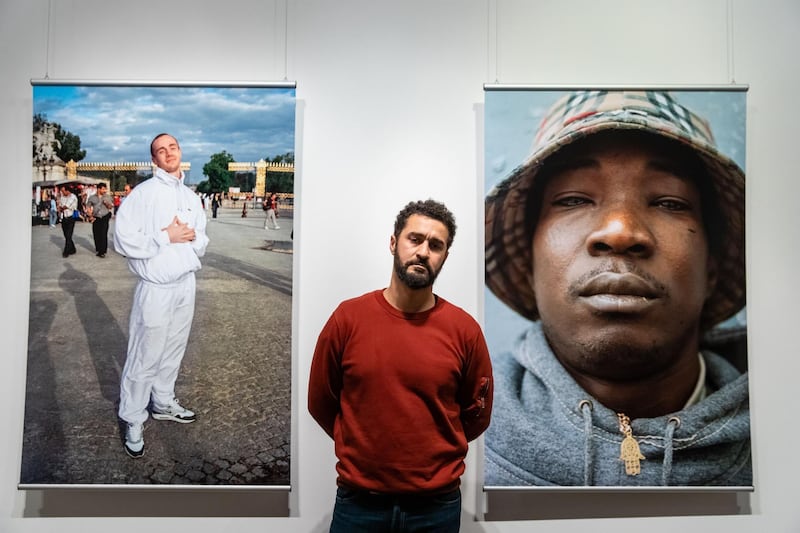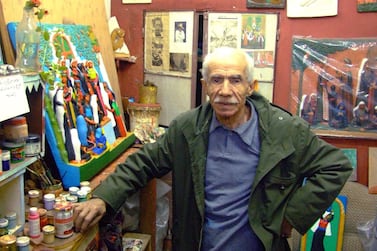Of all the scenes in Mohamed Bourouissa’s show at the Photographers’ Gallery in London, it is the one the artist did not capture himself that is the most haunting. A man, perhaps in his mid-forties, stands in the aisle of a Brooklyn grocery store holding two bottles of Tide detergent. His mouth half open, eyes wide against the strong flash, his expression is of fear and resignation.
The man was caught stealing the goods he is holding, but the shopkeeper promised not to call the police so long as he could take the shoplifter's portrait and display it in the store window as a deterrent. This picture was then tacked up alongside similar images of other people, almost all black or Hispanic, who had similarly stolen everyday essentials, most probably out of economic necessity.
When Bourouissa saw these amateur mugshots on a trip to New York, he asked the shopkeeper if he could rephotograph them.
"Shoplifters is the most difficult work I have made. [But] am I right to exhibit these images?" Bourouissa says. "After I photographed the series, I was still undecided whether it was ethical. But then I realised the subject was not the people in the pictures, but the object of the original photograph and the violence that object represents.
“This is related to the violence of photography in general, of stealing someone’s image in the act of taking a picture. In my work I am often looking at who is behind the image.”
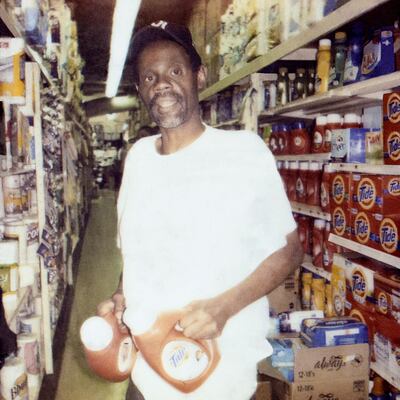
Bourouissa, who was born in Algeria but whose family moved to France when he was 5, grew up in the suburbs of Paris, where he and his friends were the subject of similar discrimination.
“The only images we had of ourselves were pictures from the newspapers, which were only taken to illustrate a riot, or something to do with the financial crisis. Or North Africans were shown in the context of ‘poor Africa’ pictures. There was no malice in these, but they were taken by outsiders in an overly paternalistic fashion. I wanted to show the people I grew up with, without making them represent a social situation or politics.”
Bourouissa's exhibition in London is part of his nomination for the Deutsche Borse Photography Foundation Prize, which carries a fund of £30,000 (Dh144,000) for the winner. The earliest project on show, Nous sommes Halles, was produced in Paris in 2002. "Le Halles is where all the subways from the suburbs cross, so a lot of young people go there because you can buy clothes, meet your friends and hang out."
At first, the images appear to be typical street-fashion photography in the vein of American photographer Jamel Shabazz, an enduring influence on the artist: groups of cool kids, all in sportswear, lark about or pose with studied cool for the camera. Yet, among the pictures is a photograph of a subway lightbox carrying an advert for the Lacoste fashion brand. In contrast with the children in the previous pictures, the models used are white and seem affluent.
"Back then Lacoste did not want young people from the suburbs wearing their clothes. It did not fit the brand. For me it was very important to represent the contradiction between the company rejecting immigrant communities, the Arabic people, the black people of the Parisian suburbs, as customers, but the subsequent appropriation of the clothes by those groups."
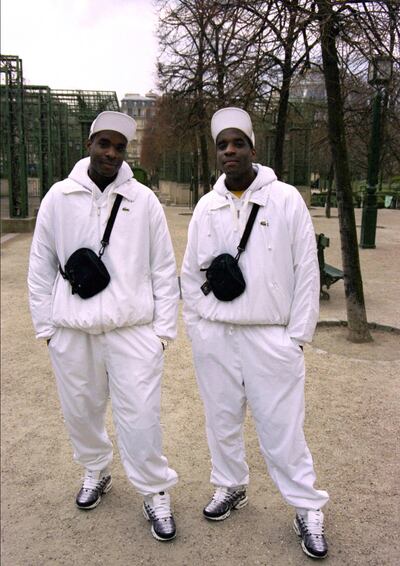
It was a similar lack of representation that he noticed when studying art and visiting museums in Paris. This inspired him to move away from strict documentary to setting up images. In the series Peripherie, the photographer posed his friends in scenes that have all the drama and pathos of history paintings.
La Republique, from that body of work, shows a crowd of young men in the communal grounds of a housing estate. It is unclear whether there is an altercation or if it is a party, but central to the action is a man standing on a low roof holding the French tricolour, the title and scene a direct reference to Eugene Delacroix's famous portrait of the Revolution, Liberty Leading the People. It shows another France, one that was rarely represented positively.
"I was really into rap music when I was young. I was listening to Wu Tang around the same time I was at art school studying Renaissance painting," Bourouissa says. "I wanted to combine these two cultures – from the museum, from the street – to show our history."
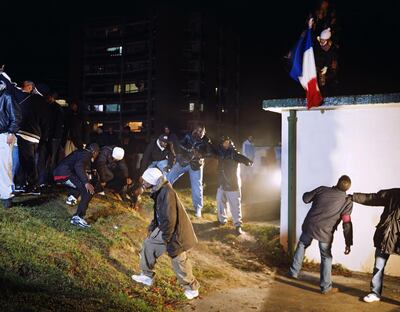
That he is from the communities he often works with is key, the artist says. It builds a trust he does not think could be achieved by an outsider. His 2009 video Temps Mort, for example, features illegal footage filmed with a low-quality camera phone that the artist smuggled in to a friend serving a prison sentence.
As well as portraying the boredom of incarceration, the images are intercut with text message exchanges between Bourouissa and the prisoner. These again betray the idea of the neutral documentarian, as the artist directs the shots and promises to top up his friend’s phone credit. Within the work Bourouissa not only implicates himself in some low-level law-breaking, but also recasts photography as a collaborative process in which the power relations have been neutered.
Bourouissa says that as such, for all the slickness and production of his other works, he sees this grainy, low-quality 18-minute film as one of his most important.
"When I made Peripherie I understood that my own position as an auteur was in crisis. For me Temps Mort was the natural progression then, because here I am questioning the position of the photographer or the filmmaker, exposing the ethics and context of how pictures are made."
That Bourouissa’s work is gaining recognition now is perhaps no coincidence given that questions of representation and authorship – who has the right to represent whom – are increasingly prevalent. Yet there is a moral ambiguity to much of the artist’s work as he navigates the intersections of class and race, a sense of nuance that is refreshing in an art world otherwise polarised by culture wars.
